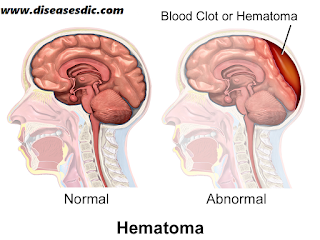Bleeding in and around the brain (intracranial hemorrhage) is caused by the rupture of blood vessels and may be caused by
- Birth injury
- Significant illness in the newborn that decreases delivery of blood or oxygen to the brain
- A blood clotting problem
Sometimes, intracranial hemorrhage occurs after normal delivery in an otherwise well newborn. The cause of bleeding in these cases is unknown.
Bleeding in the brain is much more common among very premature infants. Newborns who have bleeding disorders (such as hemophilia) are also at increased risk o bleeding in the brain.
Most infants with bleeding do not have symptoms, whereas others can be sluggish (lethargic), feed poorly, and /or have seizures.
Bleeding can occur in several places in and around the brain:
- Subarachnoid hemorrhage is bleeding below the innermost of the two membranes that cover the brain. This is the most common type of intracranial hemorrhage in newborns, usually occurring in full-term newborns. Newborns with a subarachnoid hemorrhage may occasionally have apnea (periods when they stop breathing), seizures, or lethargy during the first 2 to 3 days of life but usually ultimately do well.
- Subdural hemorrhage is bleeding between the outer and the inner layers of the brain covering. It is now much less common because of improved childbirth techniques. A subdural hemorrhage can put increased pressure on the surface of the brain. Newborns with a subdural hemorrhage may develop problems such as seizures.
- Epidural hematoma is bleeding between the outer layer (dura mater) of tissue covering the brain (meninges) and the skull. An epidural hematoma may be caused by a skull fracture. If the hematoma increases the pressure in the brain, the soft spots between skull bones (fontanelles) may bulge. Newborns with an epidural hematoma may have apnea or seizures.
- Intraventricular hemorrhage is bleeding into the normal fluid-filled spaces (ventricles) in the brain.
- Intraparenchymal hemorrhage occurs into the brain tissue itself. Intraventricular hemorrhages and intraparenchymal hemorrhages usually occur in very premature newborns and occur more typically as a result of an underdeveloped brain rather than a birth injury. Most of these hemorrhages do not cause symptoms, but large ones may cause apnea or a bluish-gray discoloration to the skin, or the newborn's entire body may suddenly stop functioning normally. Newborns who have large hemorrhages have a poor prognosis, but those with small hemorrhages usually survive and do well.
Newborns who have a hemorrhage may be admitted to a neonatal intensive care unit (NICU) for monitoring, supportive care (such as warmth), fluids given by vein (intravenously), and other treatments to maintain body functions.



Comments
Post a Comment